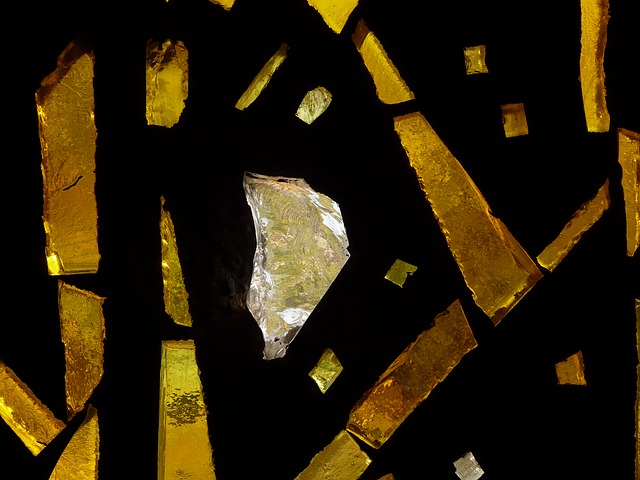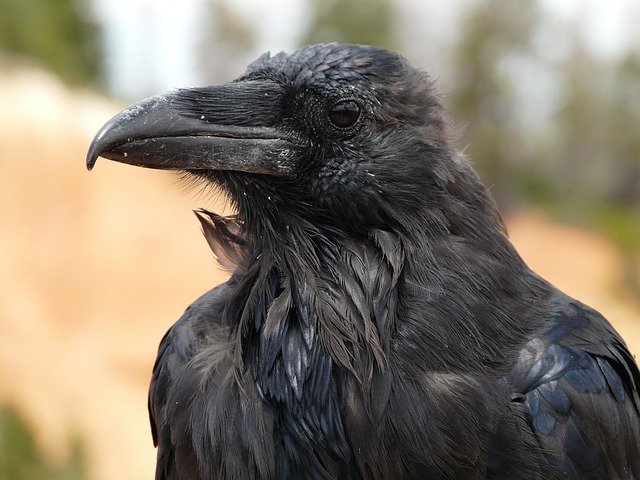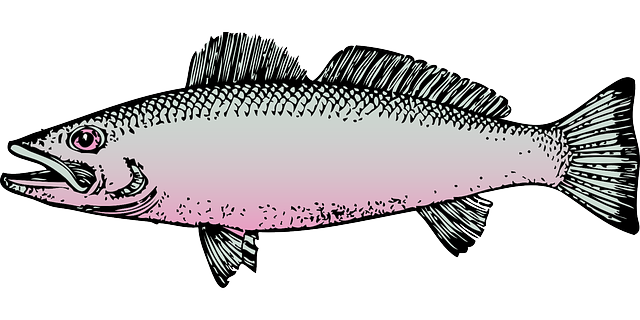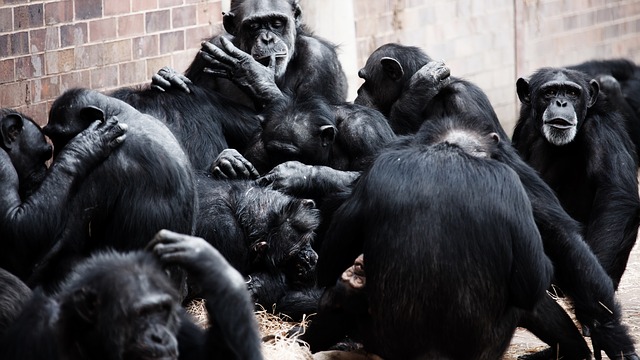مؤسسة روكفلر
| تأسست | 1913 |
|---|---|
| المؤسس | John D. Rockefeller, John D. Rockefeller, Jr., Frederick Taylor Gates |
| النوع |
Non-operating private foundation (IRS exemption status): 501(c)(3) |
| بؤرة الاهتمام | "Smart Globalization" |
| المسقط |
|
| الوسيلة | Endowment |
| أبرز الأشخاص | President - Judith Rodin |
| الوقف | $3.1 بليون (2008) |
| الرسالة | "لتعزيز رفاه البشرية في جميع أنحاء العالم." |
| المسقط الإلكتروني | RockFound.org |
مؤسسة روكفلر منظمة بارزة خيرية وهي مؤسسة خاصة مقرها في الجادة الخامسة 420 ، في مدينة نيويورك.
أسس هذه المؤسسة البارزة التي انشئتها عائلة روكفلر لستة الأجيل ، أسسها جون روكفلر ("الأب") ، جنبا إلى جنب مع ابنه جون روكفلر ، الابن ، الكبير في مجال الأعمال الخيرية والمستشار الرئيسي غيتس فريدريك تايلور ، في ولاية نيويورك في 1913.
هدفها الأساسي التاريخي "لتعزيز رفاه البشرية في جميع أنحاء العالم".
تتضمن انجازاتها[]
- الدعم المالي للتعليم في الولايات المتحدة " بدون تفرقة على أساس العرق أوالجنس أوالعقيدة";
- انشاء كلية جونز هوبكنز للصحة العامة وكلية هارفد للصحة العامة أول معهدين من نوعيهما;
- تطوير لقاح مضاد ل الحمى الصفراء;
- تمويل التطوير الأولي لعلوم الاجتماع;
- تمويل عمل عشرات من الحائزين على جائزة نوبل.
- المساعدة في تأسيس المدرسة الجديدة
- دعم إنشاء مجموعة كبيرة من المؤسسات الثقافية الأمريكية والدولية ؛
- تمويل التنمية الزراعية لتوسيع نطاق إمدادات الغذاء في جميع أنحاء العالم.
على الرغم من حتى مؤسسة روكفلر لم تعد أكبر مؤسسة من حيث الأصول ، الا ان تراث مؤسسة روكفلر البارز صفوف جعلها تصنف على أنها من بين المنظمات غير الحكومية الأكثر تأثيرا في العالم. بلغت الأصول بنهاية عام 2008 ، 3.1 مليار دولار والتي كانت 4.6 مليار دولار في عام 2007 ، مع منح السنوية تصل الى 137 مليون دولار.
القيادة
The current president of the foundation is Judith Rodin Ph.D., former president of the University of Pennsylvania, who succeeded Gordon Conway in 2005 and is the first woman ever to head the foundation. She has set out on an agenda to change the traditional organizational structure and identify the major 21st-century trends that could be affected by the foundation. It now seeks out ideas that can potentially make a difference in the lives of large numbers of poor or vulnerable people, with measurable results within three to five years.[]
البدايات
Rockefeller's interest in philanthropy on a large scale began in 1889, influenced by Andrew Carnegie's published essay, The Gospel of Wealth, which prompted him to write a letter to Carnegie praising him as an example to other rich men.[] It was in that year that he made the first of what would become $35 million in gifts, over a period of two decades, to fund the University of Chicago.
His initial idea to set up a large-scale tax-exempt foundation occurred in 1901, but it was not until 1906 that Senior's famous business and philanthropic advisor, Frederick Taylor Gates, seriously revived the idea, saying that Rockefeller's fortune was rolling up so fast his heirs would "dissipate their inheritances or become intoxicated with power", unless he set up "permanent corporate philanthropies for the good of Mankind".
It was also in 1906 that the Russell Sage Foundation was established, though its program was limited to working women and social ills. Rockefeller's would thus not be the first foundation in America (Benjamin Franklin was the first to introduce the concept), but it brought to it unprecedented international scale and scope. In 1909 he signed over 73,000 shares of Standard Oil of New Jersey, valued at $50 million, to the three inaugural trustees, Junior, Gates and Harold Fowler McCormick, the first installment of a projected $100 million endowment.
They applied for a federal charter for the foundation in the US Senate in 1910, with at one stage Junior even secretly meeting with President William Howard Taft, through the aegis of Senator Nelson Aldrich, to hammer out concessions.[] However, because of the ongoing (1911) antitrust suit against Standard Oil at the time, along with deep suspicion in some quarters of undue Rockefeller influence on the spending of the endowment, the end result was that Senior and Gates withdrew the bill from Congress in order to seek a state charter.
On May 14, 1913, New York Governor William Sulzer approved a state charter for the foundation - two years after the Carnegie Corporation - with Junior becoming the first president. With its large-scale endowment, a large part of Senior's fortune was insulated from inheritance taxes. The total benefactions of both him and Junior and their philanthropies in the end would far surpass Carnegie's endowments, his biographer Ron Chernow states, ranking Rockefeller as "the greatest philanthropist in American history."
Early grants and connections
The first Secretary of the foundation was Jerome Davis Greene, the former Secretary of Harvard University, who wrote a "memorandum on principles and policies” for an early meeting of the trustees that established a rough framework for the foundation's work. On December 5, the Board made its first grant of $100,000 to the American Red Cross to purchase property for its headquarters in Washington, D.C. At the beginning the foundation was global in its approach and concentrated in its first decade entirely on the sciences, public health and medical education.
It was initially located within the family office at Standard Oil's headquarters at 26 Broadway, later (in 1933) shifting to the GE Building (then RCA), along with the newly-named family office, Room 5600, at Rockefeller Center; later it moved to the Time-Life Building in the Center, before shifting to its current Fifth Avenue address.
In 1913 the foundation set up the International Health Commission (later Board), the first appropriation of funds for work outside the US, which launched the foundation into international public health activities. This expanded the work of the Sanitary Commission worldwide, working against various diseases in fifty-two countries on six continents and twenty-nine islands, bringing international recognition of the need for public health and environmental sanitation. Its early field research on hookworm, malaria, and yellow fever provided the basic techniques to control these diseases and established the pattern of modern public health services.[]
The Commission established and endowed the world's first school of Hygiene and Public Health, at Johns Hopkins University, and later at Harvard, and then spent more than $25 million in developing other public health schools in the US and in 21 foreign countries - helping to establish America as the world leader in medicine and scientific research. In 1913 it also began a 20-year support program of the Bureau of Social Hygiene, whose mission was research and education on birth control, maternal health and sex education.
In 1914 the foundation set up the China Medical Board, which established the first public health university in China, the Peking Union Medical College, in 1921; this was subsequently nationalised when the Communists took over the country in 1949. In the same year it began a program of international fellowships to train scholars at the world’s leading universities at the post-doctoral level; a fundamental commitment to the education of future leaders.
Also in 1914, the trustees set up a new Department of Industrial Relations, inviting William Lyon MacKenzie King to head it. He became a close and key advisor to Junior through the Ludlow massacre, turning around his attitude to unions; however the foundation's involvement in IR was criticized for advancing the family's business interests.[] It henceforth confined itself to funding responsible organizations involved in this and other controversial fields, which were beyond the control of the foundation itself.
Through the Laura Spelman Rockefeller Memorial, established by John D. Rockefeller, Jr. in 1918 and named after his mother, the family shifted the focus of philanthropy into the social sciences, stimulating the founding of university research centres and creating the Social Science Research Council. This memorial fund was subsequently folded into the foundation in a major reorganization in 1928/9.
John D. Rockefeller, Jr. became the foundation chairman in 1917. One of the many prominent trustees of the institution since has been C. Douglas Dillon, the United States Secretary of the Treasury under both Presidents John F. Kennedy and Lyndon B. Johnson. The foundation also supported the early initiatives of Henry Kissinger, such as his directorship of Harvard's International Seminars and the early foreign policy magazine Confluence, both established by him while he was still a graduate student.
Programs: scale and scope
Through the years the foundation has expanded greatly in scope. Historically, it has given more than $14 billion in current dollars to thousands of grantees worldwide and has assisted directly in the training of nearly 13,000 Rockefeller Fellows.
Its overall philanthropic activity has been divided into five main subject areas:
- Medical, health, and population sciences,
- Agricultural and natural sciences,
- Arts and humanities,
- Social sciences,
- International relations.
A major program beginning in the 1930s was the relocation of German (Jewish) scholars from German universities to America. This was expanded to other European countries after the Anschluss occurred; when war broke out it became a full-scale rescue operation. Another program, the Emergency Rescue Committee was also partly funded with Rockefeller money; this effort resulted in the rescue of some of the most famous artists, writers and composers of Europe. Some of the notable figures relocated or saved (out of a total of 303 scholars) by the Foundation were Thomas Mann, Claude Lévi-Strauss and Leo Szilard, enriching intellectual life and academic disciplines in the US. This came to light afterwards through a brief, unpublished history of the Foundation's program.
Another significant program was its Medical Sciences Division, which extensively funded women's contraception and the human reproductive system in general. Other funding went into endocrinology departments in American universities, human heredity, mammalian biology, human physiology and anatomy, psychology, and the pioneering studies of human sexual behavior by Dr. Alfred Kinsey.
In 1950 the Foundation mounted a major program of virus research, establishing field laboratories in Poona, India; Port of Spain, Trinidad; Belem, Brazil; Johannesburg, South Africa; Cairo, Egypt; Ibadan, Nigeria; and Cali, Colombia.[] In time, major funding was also contributed by the countries involved, while in Trinidad the British government and neighbouring British-controlled territories also assisted. Sub-professional staff were almost all recruited locally and, wherever possible, local people were given scholarships and other support to be professionally trained. In most cases, locals eventually took over management of the facilities. Support was also given to research on viruses in many other countries. The result of all this research was the identification of a huge number of viruses affecting humans, the development of new techniques for the rapid identification of viruses, and a quantum leap in our understanding of anthropod-borne viruses.
In the arts it has helped establish or support the Stratford Shakespearean Festival in Ontario, Canada, and the American Shakespeare Festival in Stratford, Connecticut; Arena Stage in Washington, D.C.; Karamu House in Cleveland, Ohio; and Lincoln Center for the Performing Arts in New York. In a recent shift[] in program emphasis, President Rodin eliminated the division that spent money on the arts, the creativity and culture program. One program that signals the shift was the foundation's support as the underwriter of Spike Lee's documentary on New Orleans, When the Levees Broke. The film has been used as the basis for a curriculum on poverty, developed by the Teachers College at Columbia University for their students.
Thousands of scientists and scholars from all over the world have received foundation fellowships and scholarships for advanced study in major scientific disciplines. In addition, the foundation has provided significant and often substantial research grants to finance conferences and assist with published studies, as well as funding departments and programs, to a vast range of foreign policy and educational organizations, some of which include:[]
- Council on Foreign Relations (CFR) - Especially the notable 1939-45 War and Peace Studies that advised the US State Department and the US government on الحرب العالمية الثانية strategy and forward planning;
- Royal Institute of International Affairs (RIIA) in London;
- Carnegie Endowment for International Peace in Washington - Support of the diplomatic training program;
- Brookings Institution in Washington - Significant funding of research grants in the fields of economic and social studies;
- World Bank in Washington - Helped finance the training of foreign officials through the Economic Development Institute;
- Harvard University - Grants to the Center for International Affairs and medical, business and administration Schools;
- Yale University - Substantial funding to the Institute of International Studies;
- Princeton University - Office of Population Research;
- Columbia University - Establishment of the Russia Institute;
- University of the Philippines, Los Baños - Funded research for the College of Agriculture and built an international house for foreign students
- McGill University - Montreal Neurological Institute
- Library of Congress - Funded a project for photographic copies of the complete card catalogues for the world's fifty leading libraries;
- Bodleian Library at Oxford University - Grant for a building to house five million volumes;
- Population Council of New York - Funded fellowships;
- Social Science Research Council - Major funding for fellowships and grants-in-aid;
- National Bureau of Economic Research.
- National Institute of Public Health of Japan (formerly Kokuritsu Kōshū Eisei-in) in Tokyo (1938);
- Group of Thirty - In 1978 the Foundation invited Geoffrey Bell to set up this high-powered and influential advisory group on global financial issues, whose current chairman is a longtime Rockefeller associate Paul Volcker.
- London School of Economics - funded research and general budget
- University of Lyon, France - funded research in natural sciences, social sciences, medicine and the new building of the medical school during the 1920s-1930s
- The Trinidad Regional Virus Laboratory
The Green Revolution
Agriculture was introduced to the Natural Sciences division of the foundation in the major reorganization of 1928. In 1941, the foundation gave a small grant to Mexico for maize research, in collaboration with the then new president, Manuel Avila Camacho. This was done after the intervention of vice-president Henry Wallace and the involvement of Nelson Rockefeller; the primary intention being to stabilise the Mexican Government and derail any possible communist infiltration, in order to protect the Rockefeller family's investments.
By 1943 this program, under the foundation's Mexican Agriculture Project, had proved such a success with the science of corn propagation and general principles of agronomy that it was exported to other Latin American countries; in 1956 the program was then taken to الهند; again with the geopolitical imperative of providing an antidote to communism. It wasn't until 1959 that senior foundation officials succeeded in getting the Ford Foundation (and later USAID, and later still, the World Bank) to sign on to the major philanthropic project, known now to the world as the Green Revolution. It also provided significant funding for the International Rice Research Institute in الفلپين. Part of the original program, the funding of the IRRI was later taken over by the Ford Foundation.
Costing around $600 million, over 50 years, the revolution brought new farming technology, increased productivity, expanded crop yields and mass fertilization to many countries throughout the world. Later it funded over $100 million dollars of plant biotechnology research and trained over four hundred scientists from Asia, Africa and Latin America. It also invested in the production of transgenic crops, including rice and maize. In 1999, the then president Gordon Conway addressed the Monsanto Company board of directors, warning of the possible social and environmental dangers of this biotechnology, and requesting them to disavow the use of so-called terminator genes; the company later complied.
In the 1990s, the foundation shifted its agriculture work and emphasis to Africa; in 2006 it joined with the Bill & Melinda Gates Foundation in a $150 million effort to fight hunger in the continent through improved agricultural productivity.
The Bellagio Center
The foundation also owns and operates the Rockefeller Foundation Bellagio Center in Bellagio, Italy. The Center comprises several buildings, spread across a 50-أكر (200,000 م2) property, on the peninsula between lakes Como and Lecco in Northern Italy. The Center is sometimes colloquially referred to as the Villa Serbelloni. The Villa is only one of the many buildings in which residents and conference participants are housed. The property was bequeathed to the Foundation in 1959 under the presidency of Dean Rusk (who was later to become U.S. President Kennedy's secretary of state).
The Bellagio Center operates both a conference center and a residency program. The residency program is a competitive program to which scholars, artists, writers, musicians, scientists, policymakers and development professionals from around the world can apply to work on a project of their own choosing for a period of four weeks.
Family involvement
Over the decades the Rockefeller family has generally distanced itself from direct involvement as trustees in the foundation's management, to maintain the foundation's independence and avoid charges of undue family influence. Family members were actively involved from the outset but later were limited to one or two representatives, such as the former president John D. Rockefeller 3rd, and then his son John D. Rockefeller, IV, who gave up the trusteeship in 1981. In 1989, David Rockefeller's daughter, Peggy Dulany, was appointed to the board for a five-year term.
In October 2006 the foundation announced that David Rockefeller, Jr. had joined the board of trustees, re-establishing the direct family link and becoming the sixth family member overall to serve on the board. This is unlike the Ford Foundation, which has permanently severed all direct links with the Ford family.[]
The foundation also has traditionally held a major portion of its shares portfolio in the family's oil companies, beginning with Standard Oil and now with its corporate descendants, including Exxon Mobil.
Historical legacy
The second-oldest major philanthropic institution in America after the Carnegie Corporation, the foundation's impact on philanthropy in general has been profound. It has supported United Nations programs throughout its history, such as the recent First Global Forum On Human Development, organized by the United Nations Development Programme (UNDP) in 1999.[1]
The early institutions it set up have served as models for current organizations: the UN's World Health Organization, set up in 1948, is modeled on the International Health Division; the U.S. Government's National Science Foundation (1950) on its approach in support of research, scholarships and institutional development; and the National Institute of Health (1950) imitated its longstanding medical programs.
Notable current trustees
- Ann M. Fudge, Chairman and CEO, Young & Rubicam Brands, New York.
- Rajat Gupta, Director, Goldman Sachs; Special Advisor to the UN Secretary-General; former Managing Director, McKinsey & Company.
- Jessica T. Mathews, President, Carnegie Endowment for International Peace, Washington, D.C.
- Sandra Day O'Connor, Associate Justice, Retired, Supreme Court of the United States, Washington, D.C. (First woman appointed to the Supreme Court.)
- James F. Orr, III, (Board Chair), President and Chief Executive Officer, LandingPoint Capital, Boston, Massachusetts.
- Mamphela Ramphele, Chairperson, Circle Capital Ventures, Cape Town, South Africa.
- David Rockefeller, Jr., Vice Chairman of Rockefeller Family & Associates; Director and former Chair, Rockefeller & Co., Inc.; current Trustee of the Museum of Modern Art.
- Raymond W. Smith, Chairman, Rothschild, Inc., New York; Chairman of Arlington Capital Partners; Chairman of Verizon Ventures; and a Trustee of the Carnegie Corporation of New York.
Notable past trustees
- Alan Alda, 1989-1994 - Actor and film director.
- Winthrop W. Aldrich 1935-1951 - Chairman of the Chase National Bank, 1934-1953; Ambassador to the Court of St. James, 1953-1957.
- John W. Davis 1922-1939 - J. P. Morgan's private attorney; founding president of the Council on Foreign Relations.
- C. Douglas Dillon 1960-1961 - US Treasury Secretary, 1961-1965; Member of the Council on Foreign Relations.
- Orvil E. Dryfoos 1960-1963 - Publisher of the New York Times, 1961-1963.
- Peggy Dulany, 1989-1994 - Fourth child of David Rockefeller; Founder and president of Synergos.
- John Foster Dulles 1935-1952 {Chairman - US Secretary of State, 1953-1959; Senior partner, Sullivan & Cromwell law firm.
- Charles William Eliot 1914-1917 - President of Harvard, 1869-1909.
- Frederick Taylor Gates 1913-1923 - John D. Rockefeller Sr.'s principal advisor.
- Stephen Jay Gould 1993-2002 - Author; Professor and Curator, Museum of Comparative Zoology, Harvard University.
- Wallace Harrison 1951-1961 - Rockefeller family architect; lead architect for the UN Headquarters complex.
- Charles Evans Hughes 1917-1921;1925-1928 - Chief Justice of the United States, 1930-1941.
- Robert A. Lovett 1949-1961 - US Secretary of Defense, 1951-1953.
- Yo-Yo Ma 1999-2002 - Cellist.
- John J. McCloy Chairman: 1946-1949;1953-1958 - Prominent US Presidential Advisor; Chairman of the Ford Foundation, 1958-1965; Chairman of the Council on Foreign Relations.
- Bill Moyers 1969-1981 - Journalist.
- John D. Rockefeller 1913-1923.
- John D. Rockefeller, Jr. Chairman: 1917-1939.
- John D. Rockefeller 3rd Chairman: 1952-1972.
- John D. Rockefeller, IV 1976-81.
- Julius Rosenwald 1917-1931 - Chairman of Sears Roebuck, 1932-1939.
- Dean Rusk 1950-1961 - US Secretary of State, 1961-1969.
- Frank Stanton 1961-1966? - President of CBS, 1946-1971.
- Arthur Hays Sulzberger 1939-1957 - Publisher of the New York Times, 1935-1961.
- Paul Volker 1975-1979 - Chairman, Board of Governors, Federal Reserve Board; President, NY Federal Reserve Bank.
- Thomas J. Watson, Jr 1963-1968? - President of IBM, 1952-1971.
- James Wolfensohn - Former President of the World Bank.
- George D. Woods 1961-1967? - President of the World Bank, 1963-1968.
- Owen D. Young 1928-1939 - Chairman of GE, 1922-1939, 1942-1945.
رؤساؤها
- Judith Rodin - 2005-
- Gordon Conway - 1998-2004
- Peter Goldmark, Jr. - 1988-1997
- Richard Lyman - 1980-1988
- John Knowles - 1972-1979
- J. George Harrar - 1961-1972
- Dean Rusk - 1952-1961
- Chester Barnard - 1948-1952
- Raymond Fosdick - 1936-1948
- Max Mason - 1929-1936
- George Vincent - 1917-1929
- John D. Rockefeller, Jr. - 1913-1917.
Bibliography
- Berman, Edward H. The Ideology of Philanthropy: The influence of the Carnegie, Ford, and Rockefeller foundations on American foreign policy, New York: State University of New York Press, 1983.
- Brown, E. Richard, Rockefeller Medicine Men: Medicine and Capitalism in America, Berkeley: University of California Press, 1979.
- Chernow, Ron, Titan: The Life of John D. Rockefeller, Sr., London: Warner Books, 1998.
- Dowie, Mark, American Foundations: An Investigative History, Boston: The MIT Press, 2001.
- Fisher, Donald, Fundamental Development of the Social Sciences: Rockefeller Philanthropy and the United States Social Science Research Council, Michigan: University of Michigan Press, 1993.
- Fosdick, Raymond B., John D. Rockefeller, Jr., A Portrait, New York: Harper & Brothers, 1956.
- Fosdick, Raymond B., The Story of the Rockefeller Foundation, New York: Transaction Publishers, Reprint, 1989.
- Harr, John Ensor, and Peter J. Johnson. The Rockefeller Century: Three Generations of America's Greatest Family. New York: Charles Scribner's Sons, 1988.
- Harr, John Ensor, and Peter J. Johnson. The Rockefeller Conscience: An American Family in Public and in Private, New York: Charles Scribner's Sons, 1991.
- Jonas, Gerald. The Circuit Riders: Rockefeller Money and the Rise of Modern Science. New York: W.W. Norton and Co., 1989.
- Kay, Lily, The Molecular Vision of Life: Caltech, the Rockefeller Foundation, and the Rise of the New Biology, New York: Oxford University Press, 1993.
- Lawrence, Christopher. Rockefeller Money, the Laboratory and Medicine in Edinburgh 1919-1930: New Science in an Old Country, Rochester Studies in Medical History, University of Rochester Press, 2005.
- Nielsen, Waldemar, The Big Foundations, New York: Cambridge University Press, 1973.
- Palmer, Steven, Launching Global Health: The Caribbean Odyssey of the Rockefeller Foundation, Ann Arbor: University of Michigan Press, 2010.
- Rockefeller, David, Memoirs, New York: Random House, 2002.
- Shaplen, Robert, Toward the Well-Being of Mankind: Fifty Years of the Rockefeller Foundation, New York: Doubleday & Company, Inc., 1964.
- Theiler, Max and Downs, W. G., The Anthropod-Borne Viruses of Vertebrates: An Account of The Rockefeller Foundation Virus Program, 1951-1970. (1973) Yale University Press. New Haven and London. ISBN 0-300-01508-9.
اقرأ أيضا
- Asia Society
- Association Internationale Africaine
- CGIAR
- Industrial relations
- MacArthur Foundation
- Rockefeller Brothers Fund
- Rockefeller family
- Philanthropy
- Social sciences
المراجع
مراجع خاصة:
- ^ FoundationCenter.org, The Rockefeller Foundation, accessed 2010-1-31
- ^ Rockfound.org, history, 1913-1919
- ^ Johns Hopkins Bloomberg School of Public Health, History
- ^ Harvard School of Public Health, History
- ^ National Library of Medicine Wilbur A Sawyers Papers
- ^ The Foundation Center
- ^ The Rockefeller Foundation Timeline
- ^ Details of the establishment and future legacy of the Rockefeller Foundation - see Ron Chernow, Titan: The Life of John D. Rockefeller, Sr., New York: Warner Books, 1998, (pp. 563-566)
- ^ Foundation withdrew from direct involvement in Industrial Relations - see Robert Shaplen, Toward the Well-Being of Mankind: Fifty Years of the Rockefeller Foundation, New York: Doubleday & Company, Inc., 1964, (p.128)
- ^ Early backing of Henry Kissinger - see Walter Isaacson, Kissinger: A Biography, New York: Simon & Schuster, (updated) 2005, (p.72)
- ^ Rockefeller Archive Center: Main subject areas.
- ^ Major rescue program of European scholars - see John Ensor Harr and Peter J. Johnson, The Rockefeller Century: Three Generations of America's Greatest Family, New York: Charles Scribner's Sons, 1988. (pp.401-03)
- ^ Medical Sciences Division and Alfred Kinsey funding - Ibid., (p.456)
- ^ The Anthropod-Borne Viruses of Vertebrates: An Account of The Rockefeller Foundation Virus Program, 1951-1970, pp. xvii, xx. Max Theiler and W. G. Downs. (1973) Yale University Press. New Haven and London. ISBN 0-300-01508-9.
- ^ New York Times, 2007: Charities Try to Keep Up With the Gateses
- ^ Funding of programs and fellowships at major universities, foreign policy think tanks and research councils - see Robert Shaplen, op, cit., (passim)
- ^ AFP Online
- ^ The story of the Foundation and the Green Revolution - see Mark Dowie, American Foundations: An Investigative History, Cambridge, Massachusetts: MIT Press, 2001, (pp.105-140)
- ^ Biotech-info.net: "The Rockefeller Foundation and Plant Biotechnology"
- ^ Share portfolio - see Waldemar Nielsen The Big Foundations, New York: Columbia University Press, 1972. (p.72)
- ^ As model for UN organizations - Ibid., (pp.64-5)
مراجع عامة:
- Seattle Post-Intelligencer article dealing with the Green Revolution and the previous collaboration with the Ford Foundation.
- "The Rockefeller Foundation and Plant Biotechnology" Address given in 1999 by former RF president Gordon Conway to the board of directors of Monsanto, on biotechnology and the terminator gene.
- Letter in Reply: Open Letter From Monsanto CEO Robert B. Shapiro To Rockefeller Foundation President Gordon Conway in 1999
- An Entrepreneurial Spirit: Three Centuries of Rockefeller Family Philanthropy This 2005 PDF document contains a detailed history and philosophy of the various Rockefeller philanthropies, presented by the Rockefeller Philanthropy Advisors (RPA), set up by the family in New York in 2002.
- G30 Members Discuss Critical Concerns For American Corporations Association for Financial Professionals 2005 article on the Group of Thirty, mentioning the Rockefeller Foundation's initiation of the Group in 1978.
- CFR Website - Continuing the Inquiry: The Council on Foreign Relations from 1921 to 1996 The history of the Council by Peter Grose, a Council member - mentions financial support from the Rockefeller foundation.
- Oct 17, 2006: David Rockefeller Jr., Ann Fudge, Rajat Gupta to join Rockefeller Foundation Board of Trustees
- Franz Boas, Margaret Mead, and ... J.D. Rockefeller?: The Role Of The Rockefeller Foundation in the History of American Anthropology
- Interview with Norman Dodd An investigation of a hidden agenda within tax-free foundations, including the Rockefeller Foundation (Video).
- Time For Ford Foundation & CFR To Divest? Collaboration of the Rockefeller, Ford and Carnegie Foundations with the Council on Foreign Relations.
- 2004: Citigroup Names Anne Mulcahy and Judith Rodin to Board of Directors
- Foundation Center: Top 100 US Foundations by total giving
- New York Times: Rockefeller Foundation Electsخمسة - Including Alan Alda and Peggy Dulany
- Rockefeller Foundation: The Bellagio Study and Conference Center
- SFGate.com: "Eugenics and the Nazis: the California Connection"
- The Long Road of Eugenics: "From Rockefeller to Roe v. Wade", Rebecca Messall, Human Life Review, Fall 2004
- Press for Conversion! magazine, Issue # 53: "Facing the Corporate Roots of American Fascism," Bryan Sanders, Coalition to Oppose the Arms Trade, March 2004
روابط خارحية
- Rockefeller Foundation website, including a timeline
















